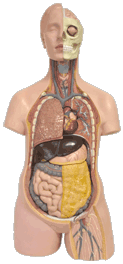At WiseGEEK, we're committed to delivering accurate, trustworthy information. Our expert-authored content is rigorously fact-checked and sourced from credible authorities. Discover how we uphold the highest standards in providing you with reliable knowledge.
What Are the Different Working Memory Models?
There are four main types of working memory models: Atkinson-Shriffin, Baddeley, Cowan and Ericsson and Kintsch model. Each of these working memory models attempts to explain how information is perceived by the senses, stored in the brain, and then either used for tasks and skills or stored for later use. Models use a series of tasks, such as reading, to test this theory.
Working memory can be defined as the process of storing and then processing or using information. This type of memory is necessary for learning, comprehension, and reasoning. Several cognitive processes are involved with the control of this memory, sometimes referred to as short-term memory. Current working memory models are theoretic with different models that are based on neuroscience and cognitive psychology research.

The Atkinson-Shriffin multi-store model for memory involves three different stages; sensory memory, short-term memory, and long-term memory. This version describes how memory actually works. The senses first detect and process the information from any of the five senses. This information may be stored in short-term memory, passed into long-term memory or displaced and removed from memory. Several types of important factors such as the type of information and cognitive abilities of the individuals were not taken into account in this version.
Baddeley's model is one of the working memory models for short-term memory. It was developed in 1974 and provides an alternative to the Atkinson & Shriffins' multi-store model. There are three main components of this model: a central executive that controls the flow of information to the two short-term storage systems known as the visuo-spatial sketchpad and the phonological loop. The visuo-spatial sketchpad refers to visual information and the phonological loop refers to verbal information.
Cowan believes that working memory models are actually a part of long-term memory. Working memory consists of long term memories that have been activated and the ability of the individual to then focus attention to these activated memories. This focus of attention can only hold four different activated memories at a time, as studies have shown that humans can only remember four digits at once.
A different theory is that skilled memory is used every day, proposed by Ericsson and Kintsch in 1995. Humans hold several concepts in working memory that then serve as directions to retrieve any information related to those concepts found in long term memory. They have titled this version as long-term working memory. Their model was based on reading tasks, stating that the memory had to contain much more than four chunks of information to be able to understand and comprehend text.
AS FEATURED ON:
AS FEATURED ON:










Discuss this Article
Post your comments